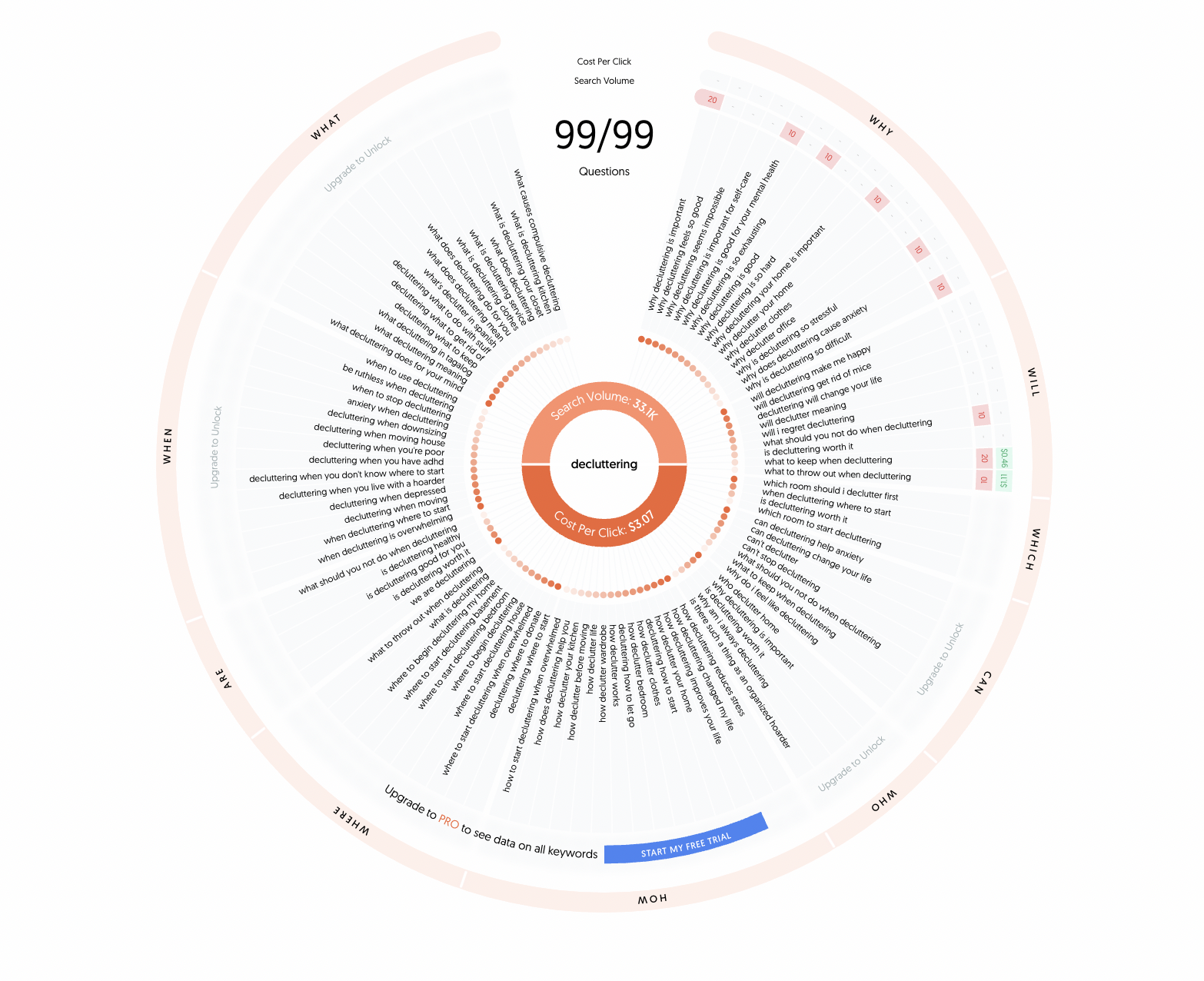As someone with a business that uses the internet, you are a content creator in some capacity. As a content marketer, it’s easy to fall into the trap of creating generic content, then wonder why you hear crickets.
The fix? Inspired content marketing.
By tapping into the power of inspired content marketing, you transform your brand’s presence from boring to brilliant.
In this post, I’ll explore:
- the importance of inspired content marketing
- how to understand your people
- finding inspiration
- creating a content plan
- types of content that create engagement
- the power of storytelling
- and common mistakes to avoid in content marketing
Need Personalized Help From a Coach? RSVP for a Free Live Monthly Workshop
Table of Contents
ToggleWhy is inspired content marketing important?
In today’s world, where content is abundant, you need to create content that stands out. AND – resonates with your people. Inspired content marketing is all about creating content that goes beyond the ordinary. It offers something unique, valuable, and memorable.
Moreover, inspired content marketing helps differentiate you from competitors. And it showcase your personality and values while establishing an emotional connection. When your content inspires, educates, entertains, or solves your audience’s problems, they are more likely to trust, respect, and advocate for your brand.
Suggested reading: Content Marketing 101
Understanding your audience
Before you can create inspired content that resonates with the people you want to reach, you need to understand who they are.
What do they care about? How do they consume content?
You get this info by surveying them, doing market research, analyzing any analytics you have, and create buyer personas. This up front work helps you gain insights into your audience’s story.
By knowing about your target audience, you can find out more about their preferred channels, formats, tone, and messaging. You can TAILOR your content to them. For example, if your audience is millennials who are passionate about sustainability, you might create video content that showcases eco-friendly practices. Or you might write blog posts that provide tips on how to live more sustainably.
Suggested reading: Using content marketing to skyrocket sales.
Finding inspiration for your content
Once you understand who you’re trying to reach, it’s time to find inspiration for your content. Inspiration can come from various sources.
Some examples: industry trends, customer feedback, thought leaders, competitors, social media, or forums.
My two favorite ways to find inspiration are 1) getting inspiration directly from client conversations or sales calls, and 2) finding places people are asking questions and having conversations already. For the latter, I’ve used Facebook groups a lot – both my own and others’. You can also check out forums like Quora, or Reddit.
There’s lots of other tools that show data around what people are searching for. I’ve used things like Google keyword planner, and Answer the Public. Answer the Public is pretty unique – you type in a search term, and it visually shows you what questions people are asking.
Here’s a screenshot when I tried it for “decluttering”. You can see how it organizes the questions by the question type:

You can also use surveys to ask about your audience’s needs and preferences. I survey my email list one to two times per year for market research and inspiration. Here’s an example of one I did in 2023 before I launched my Abundant Entrepreneur Experience membership.
Lastly, if it’s relevant, you can look beyond your industry and draw inspiration from art, music, literature, or pop culture. Look for content that resonates with your people on an emotional or intellectual level. For example, if your brand is in the fitness industry, you might create a blog post that compares workout routines to famous movie scenes. Or creates a Spotify playlist that motivates people to exercise.
Creating a content plan
Once you find inspiration for your content marketing, it’s time to create a strategic content plan that aligns with your goals. Your content strategy should include a content calendar, content themes, content marketing types, distribution channels, and metrics for success.
When deciding how to get leads and sales consistently, I find it helpful to determine what my “minimum viable” marketing plan is.
Minimum Viable Marketing Plan
The term “minimum viable” comes from my background in dev. Minimum Viable Product or MVP is a development technique in which a new product is introduced in the market with JUST basic features, but enough to get the attention of the consumers. The final product is released in the market only after getting sufficient feedback from the product’s initial users.
In this context, I just mean: what is the minimum amount of marketing you NEED to do, period, to ensure some kind of consistency in creating opportunity for business growth. Read more about organic marketing.
Your minimum viable marketing plan needs to cover: awareness, engagement, subscription and sales.
To determine your minimum viable, we want to look at your:
- Focus: what is your current desire in your business?
- Energy and motivation: how is your energy, motivation and inspiration? Are you consistently super productive? Or is it inconsistent? If it’s inconsistent, your minimum lan should have more spaciousness
- Anchor content: What is the #1 absolute non-negotiable content you can commit to, no matter what?
- Supporting content: What is the inevitable supporting content that will be involved in your marketing because of your anchor?
- Additional content: What additional content do you want to loosely plan to include, but that is super negotiable depending on life and energy?
Your content plan should also consider the buyer’s journey.
This includes:
- Awareness: how do they find you initially
- Engagement: how do you capture their attention
- Subscription: how do you get their contact info
- Conversion: how do you close sales
I created a whole epic training on this above.
Types of content that inspire and engage
Inspired content can come in many formats and types, depending on your target audience’s preferences, your brand’s personality, and your content plan’s goals.
Here are some examples of content types that inspire and engage. (This is the type of content you’ll plug into the outline above.)
- Blog posts: Blog posts are a popular type of long form content. You can use blog posts to share your brand’s insights, opinions, or stories, or provide practical tips, and tutorials. When creating blog posts, make sure to use a catchy headline, a clear structure, and visuals that support your message. Also, consider SEO best practices. Here is a simple guide on writing blog posts.
- Videos: Videos are a powerful and engaging content type. You can use videos to create product demos, customer testimonials, explainer videos, or brand stories. Consider using subtitles, annotations, or calls to action to enhance your video’s impact. You can use YouTube, Tiktok, Instagram, or Facebook. Here is a guide for beginners trying video.
- Podcasts: Podcasts are an audio content type that can educate, entertain, or inspire your target audience while they are on the go. You can use podcasts to interview experts, share your brand’s insights, or tell stories that resonate with your audience.
- Social media posts: Any other short form social media you want to create to go along with the above.
- Email marketing: Regardless of what other forms of content you decide to create, email will be the one non-negotiable across any industry.
Read more about share worthy content.
The power of storytelling in content marketing
One of the most effective ways to inspire and engage your audience is through storytelling. Storytelling is the art of using narratives and emotions to connect with your target audience more deeply. Storytelling makes readers and viewers feel seen and heard. When done well, this encourages people to take action.
I like to frame my storytelling for the purpose of marketing like this:
- Back story: where I came from, how I got here
- Problem: the pain I was experiencing
- Epiphany: how I realized I didn’t have to live that way anymore
- Struggle: continued to struggle, trying solutions that didn’t work but getting clarity
- Solution: finding the solution
An example of this, from an ADHD blogger who teaches about decluttering.
- Back story: Casey has ADHD, and really struggled with the birth of her first child. When she got pregnant again, she came up with a whole self care plan that involved getting way more support from her family. Then…the p@ndemic happened…
- Problem: Her whole plan foiled, now Casey had to figure out how to survive pregnancy alone. Always a messy person, the house fell into chaos while Casey felt on just doing her best to take care of herself and her family. Her house was a mess, and she felt shame around it and thought the mess was a moral failing.
- Epiphany: Casey had a realization that cleanliness had nothing to do with morality. Not only that, but she deserved to have her space be functional – not for anyone else but for her.
- Struggle: She started learning about decluttering, but struggled to find systems that worked for her because of her neurodivergence. But she kept going.
- Solution: She realized that she loves finding patterns. So, once she could apply her love for patterns to a system for cleaning her house, she was able to make her space functional, consistently.
- Now she teaches others to do the same.
Exercise to practice using storytelling in your content marketing:
Identify your brand’s story
What is your brand’s unique identity, purpose, or values? You might start with your personal story here. What challenges or successes did you face along the way? What are your goals?
Use customer stories
Customer stories are a powerful way to showcase your brand’s impact on people’s lives and establish social proof. You can use customer stories to highlight your brand’s benefits, features, or values, or to create a sense of community or empathy with your audience.
Measuring the success of your inspired content marketing
Measuring the success of your inspired content marketing is simple, and it has nothing to do with likes and shares 🙂
Here are some things to track:
- Traffic: Traffic metrics, such as pageviews, sessions, or time on site, can indicate how well your content attracts and retains your audience and encourages them to explore your website.
- Leads: Lead metrics, lead magnet submissions, email sign-ups, or sales calls, can indicate how well your content generates interest and encourages your audience to take the next step.
- Conversion: Conversion metrics, such as sales, downloads, or subscriptions, can indicate how well your content drives revenue.
- Engagement: While I encourage you NOT to obsess over this, metrics, such as likes, shares, comments, or click-through rates, can partially indicate how well your content resonates with your audience.
Common mistakes to avoid in content marketing
While inspired content marketing can be a game-changer for your brand, there are some common mistakes that can undermine your content’s impact and effectiveness. Here are some mistakes to avoid:
- Ignoring your goal: Your content should always be tailored to your business goal: making money. Make sure your content relates to your ideal client, and ultimately what you’re selling. Tip: Don’t know what to sell? Here are 8 fast offer frameworks.
- Focusing on quantity over quality: While it’s important to create a consistent and varied content plan, it’s more important to create content that is valuable and impactful.
- Neglecting SEO: SEO is crucial to increasing your content’s visibility and reach. Most platforms have some form of their own SEO, or other factors that inform how people find your content (tags, hashtags, keywords, metadata, etc.)
- Ignoring metrics: if your content doesn’t lead to traffic, leads and sales, it’s ultimately not going to help create a sustainable business.
Conclusion: Bringing it all together for a brilliant content marketing strategy
Inspired content marketing is all about creating content that goes beyond the ordinary. It offers something unique, valuable, and memorable to your people. To create a brilliant content marketing strategy, you need to understand your target audience, find inspiration for your content, create a content plan, use types of content that inspire and engage, use storytelling and visuals, measure your success, and avoid common mistakes.






